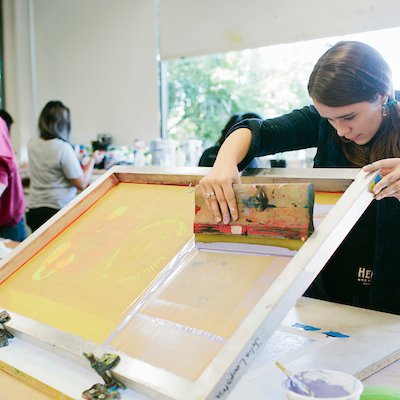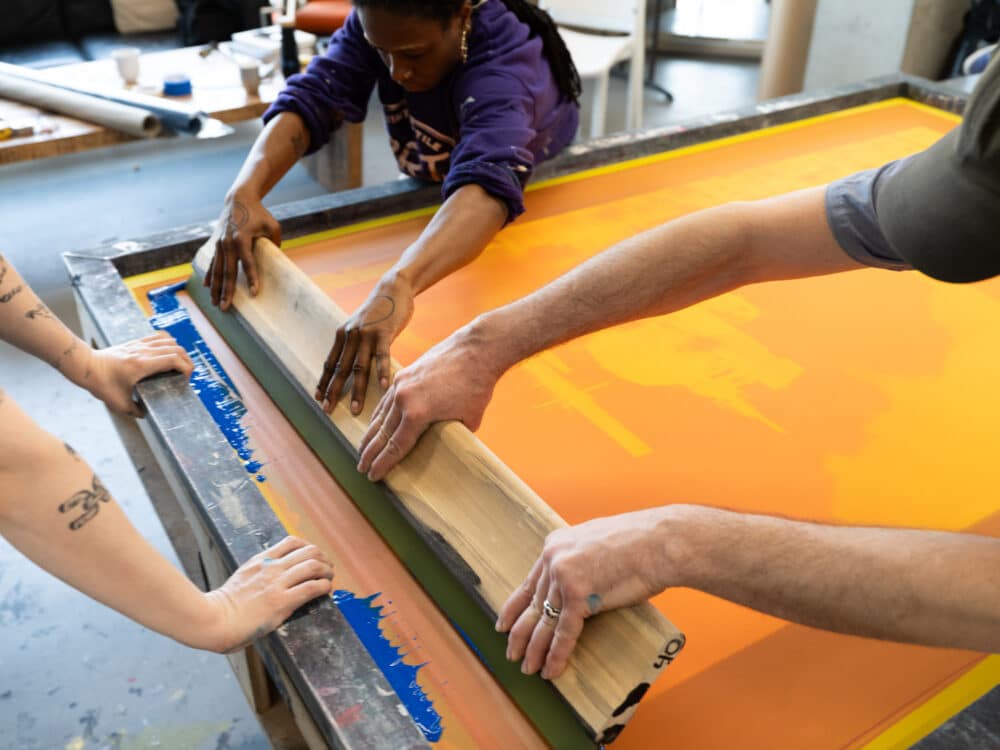ChatGPT said: Top reasons to work with 10:9 Design Texas for promotional products
The Crucial Overview to Understanding Screen Printing and Its Versatile Uses
Screen printing has a rich history that dates back to ancient times, advancing right into a sophisticated technique used throughout numerous sectors today. This overview checks out the details of the screen printing procedure, describing its applications in advertising, style, and home décor - 10:9 Design Screen Printing Texas. Recognizing these fundamentals can open up innovative possibility for both imaginative and business tasks. The adhering to sections will certainly disclose necessary ideas and strategies to enhance one's screen printing endeavors
The History of Screen Printing
Although screen printing has roots that trace back centuries, its advancement reflects the technological and imaginative improvements of various societies. Coming from ancient China, the strategy was originally made use of for embellishing fabrics and later infect Japan, where it became indispensable to Ukiyo-e woodblock printing. The method changed to Europe in the 18th century, where it acquired appeal among artisans and industrial printers. The innovation of picture emulsion in the 20th century reinvented screen printing, enabling more detailed designs and greater effectiveness. Musicians like Andy Warhol even more thrust its popularity, utilizing the tool to develop famous works that mixed commercialism and art. By the late 20th century, screen printing had actually established itself as a flexible method, used in vogue, advertising, and fine art. Today, it proceeds to progress, incorporating digital innovation and broadening its applications throughout numerous industries.
The Screen Printing Process Explained
Screen printing transforms creative visions right into substantial layouts through a series of exact actions. Originally, an image is created and afterwards transferred onto a screen, commonly made from great mesh textile extended over a frame. A light-sensitive emulsion is related to the screen, which is exposed to light, hardening in areas not covered by the photo. After rinsing the unhardened solution, a pattern is developed.
Next off, the screen is put over the substratum, whether it be material, paper, or another material. Ink is then pressed via the open locations of the pattern utilizing a squeegee, depositing the design onto the substrate listed below. This process can be repeated for multiple colors, calling for separate screens for each and every shade. The published product is cured making use of warmth to ensure the ink adheres properly, resulting in a sturdy, vivid style prepared for use.
Kinds Of Screen Printing Techniques

Furthermore, specialty techniques, such as discharge screen printing, remove dye from the fabric to create softer prints, while foil screen printing applies metal aluminum foil to attain a glossy coating (10:9 Design Screen Printing). Each strategy offers distinct characteristics, catering to various creative needs and manufacturing ranges, inevitably broadening the possibilities within the screen printing domain
Applications of Screen Printing in Various Industries

Additionally, the signage and advertising and marketing fields make use of screen printing for creating attractive displays and banners. This approach permits strong colors and detailed styles that capture attention. In electronic devices, screen printing is utilized for applying conductive inks to motherboard, vital for component links. Additionally, the home decoration market embraces screen printing to generate unique designs on fabrics and wall surface art. Generally, screen printing functions as a vital tool across diverse areas, improving products with individualized and aesthetically appealing graphics.
Tips for Successful Screen Printing Projects
While taking on a screen printing job, careful focus to information can significantly boost the final outcome. Selecting high-quality products is crucial; this includes the screen, inks, and substratums. Utilizing ideal mesh matters can affect ink deposition and information resolution. Preparation is similarly important; detailed cleaning of displays and proper exposure times assure crisp prints.
Next, precise registration is essential for multi-color prints. get more info Utilizing placement tools can assist attain exact layering. In addition, screening prints on scrap products prior to production aids recognize prospective problems without throwing away resources.

Often Asked Inquiries
What Materials Are Finest for Screen Printing on Textile?
Cotton and polyester blends are suitable for screen printing on fabric because of their durability and ink absorption. In addition, specialty materials like silk or canvas can generate one-of-a-kind textures and coatings, enhancing the general style quality.
Just how Do I Clean and Maintain Screen Printing Devices?
To cleanse and preserve screen printing devices, one need to on a regular basis wash screens with proper solvents, evaluate mops for wear, lubricate moving parts, and shop all items in a dry, dust-free atmosphere to lengthen their lifespan.
What Are the Environmental Impacts of Screen Printing?
Screen printing can have considerable ecological impacts, consisting of chemical waste from inks and solvents, water usage throughout cleansing processes, and energy intake. Sustainable methods and green products are vital for decreasing these negative effects.
Can Screen Printing Be Done in your home Effectively?
Screen printing can be successfully done at home with the right materials and techniques. Hobbyists can develop top quality prints, though success depends on their ability degree, devices, and understanding of the procedure included.
What Are the Costs Connected With Starting a Screen Printing Company?

Starting a screen printing company includes expenses for tools, products, and work area. Preliminary expenses generally vary from a couple of hundred to numerous thousand dollars, depending upon the scale, top quality of machinery, and preferred production capacity.
Screen printing has an abundant background that dates back to ancient times, evolving right into an advanced strategy made use of across various industries today. An additional method, rotary screen printing, uses round displays, promoting continual printing on textile rolls, thereby enhancing efficiency for large manufacturings. Additionally, specialized strategies, such as discharge screen printing, eliminate color from the material to produce softer prints, while aluminum foil screen printing applies metallic foil to attain a glossy coating. In the style market, screen printing is extensively made use of to create lively designs on clothing, allowing brands to display their one-of-a-kind styles. Cotton and polyester blends are suitable for screen printing on fabric due to their sturdiness and ink absorption.